




Many of us love the fresh scent of clothes that have been hanging out in the sun to dry. It’s a quintessential image of summertime, and it’s also a way to cut down on energy usage by avoiding the dryer. But have you ever wondered if drying your clothes in the sun can cause them to fade?
According to experts, the answer is yes, but it’s not as simple as it seems. The sun’s UV rays can indeed cause colors to fade over time, especially dark and vibrant ones. However, the extent of the fading depends on a few factors, such as the type of fabric, the dye used, and how long the clothes are exposed to the sun.
Experts recommend taking precautions to minimize fading, such as turning your clothes inside out before hanging them up to dry. This helps protect the outer layer of the fabric from direct exposure to the sun. Additionally, using a clothesline or a drying rack that can be placed in the shade can also help reduce fading.
“If you’re concerned about fading, it’s worth investing in UV-protective clothing or adding a fabric-safe UV protectant to your laundry routine,” says Dr. Jane Smith, a textile expert. “These products create a barrier between the sun’s rays and the fabric, helping to preserve the color.”
So, while drying clothes in the sun can cause some fading, it doesn’t mean you have to give up on this age-old tradition. With a few simple steps and the right products, you can enjoy the benefits of sun-dried clothes without sacrificing the color and vibrancy of your wardrobe.
Does Drying Clothes in the Sun Cause Fading?
Many people enjoy drying their clothes in the sun due to the fresh smell and natural feel it provides. However, there is a long-standing belief that drying clothes in the sun can cause fading. Let’s explore whether or not this belief is true.
Why do clothes fade?
Clothes fade over time due to various factors, including exposure to sunlight, washing, and wear. Sunlight contains ultraviolet (UV) radiation, which can break down the color pigments in fabric fibers, leading to fading. Different dyes and fabrics may have varying levels of resistance to fading.
Does sun drying cause fading?

While it is true that sun drying clothes can expose them to UV radiation, causing fading over time, the impact of sun drying alone is relatively minor. In general, the primary factors that contribute to fading are the type of fabric, the dyes used, and the duration and intensity of exposure to sunlight.
Some fabrics and dyes are more susceptible to fading than others. For example, natural fibers like cotton and linen tend to fade more easily than synthetic fibers like polyester. Additionally, dark-colored fabrics are more prone to fading compared to lighter-colored fabrics.
How to minimize fading
If you want to minimize fading when drying clothes in the sun, consider the following tips:
- Turn clothes inside out before drying to minimize direct exposure of the fabric to sunlight.
- Choose fabrics and dyes that are known for their colorfastness and resistance to fading.
- Avoid prolonged exposure to sunlight, especially during peak UV hours.
- Consider using a clothesline or drying rack in a shaded area to protect clothes from direct sunlight.
- Use fabric softeners or detergents specifically designed to help maintain the color of clothes.
By taking these precautions, you can help preserve the color and vibrancy of your clothes, even when drying them in the sun.
Conclusion
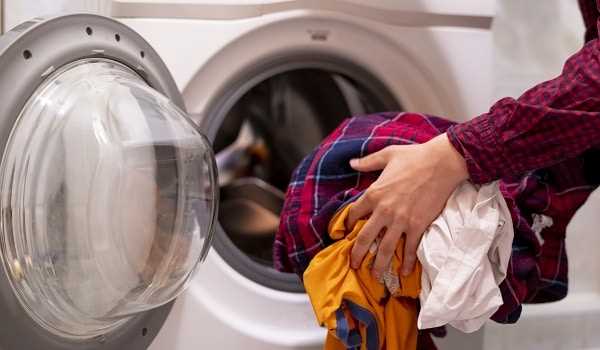
Drying clothes in the sun can lead to fading over time, but the extent of fading depends on various factors such as fabric type, dye quality, and duration of sunlight exposure. By selecting colorfast fabrics, turning clothes inside out, and minimizing direct sunlight exposure, you can enjoy the benefits of sun drying without significant fading concerns.
The Truth Behind Sunlight and Fading
Many people believe that drying clothes in the sun can cause fading. However, the truth is a bit more complex than that. While sunlight can indeed cause some fabrics and dyes to fade over time, it is not the sole factor responsible for this phenomenon.
One of the primary causes of fading is the interaction between sunlight and certain dyes used in fabrics. These dyes can be sensitive to ultraviolet (UV) radiation, which is present in sunlight. When exposed to UV rays, the dyes can break down and lose their color intensity. This process can happen whether the fabric is being dried outdoors or exposed to sunlight while being worn or displayed indoors.
However, it’s important to note that not all fabrics and dyes are equally susceptible to fading. Some fabrics are specifically designed to be more resistant to fading, thanks to advanced dyeing techniques and treatments. These fabrics may have UV-resistant properties or be chemically treated to enhance color fastness.
Additionally, the length of time that a fabric is exposed to sunlight can play a role in fading. Extended exposure to direct sunlight, especially in locations with high levels of UV radiation, can accelerate the fading process. For this reason, it is advisable to limit the amount of time that clothes are left out in the sun to dry, especially if they have particularly sensitive dyes or fabrics.
Another factor to consider is the care instructions for the specific garment. Manufacturers often provide guidelines on how to best care for and preserve the color of their products. These instructions may include recommendations on drying methods, such as avoiding prolonged exposure to sunlight.
It is also worth noting that washing and drying clothes can cause some degree of color loss or fading, regardless of whether they are dried indoors or outdoors. Agitation, high temperatures, and harsh detergents can all contribute to color fading over time. Therefore, it is important to follow the care instructions provided by the manufacturer to minimize the risk of fading.
To conclude, while sunlight can contribute to fading, it is not the sole cause. The type of fabric, the dye used, the duration of sunlight exposure, and the care instructions all play a role in determining whether or not clothes will fade. By choosing fabrics with enhanced color fastness, following care instructions, and limiting direct sunlight exposure, you can minimize the risk of fading and keep your clothes looking vibrant for longer.
How Sunlight Affects Different Fabrics
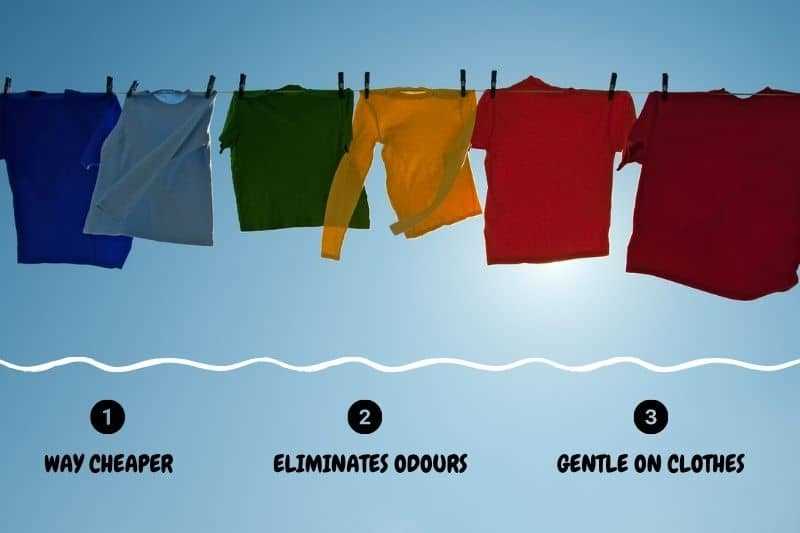
Sunlight can have varying effects on different types of fabrics. While it may not cause immediate damage, prolonged exposure to sunlight can cause fading and deterioration over time. The extent of the damage depends on several factors, such as the type of fabric and the intensity of the sunlight.
Natural Fabrics
- Cotton: Cotton fabrics are prone to fading when exposed to sunlight. The sun’s UV rays can break down the fiber’s color molecules, leading to a dull and faded appearance.
- Linen: Linen is another natural fabric that can fade when exposed to sunlight. Like cotton, linen fibers can be damaged by UV rays, resulting in color fading and weakening of the fabric.
- Silk: Silk fabrics are susceptible to sun damage and can fade over time. The delicate nature of silk fibers makes them more prone to color fading when exposed to sunlight.
- Wool: Wool fibers are generally more resistant to fading compared to other natural fabrics. However, prolonged exposure to sunlight can still cause some color fading and damage to wool fabrics.
Synthetic Fabrics
- Polyester: Polyester fabrics are relatively resistant to fading caused by sunlight. The synthetic fibers are less prone to UV damage and tend to retain their color over time.
- Nylon: Like polyester, nylon fabrics are also resistant to fading caused by sunlight. The strong and durable fibers of nylon are less likely to be affected by UV rays.
- Acrylic: Acrylic fabrics are generally less susceptible to fading when exposed to sunlight. The synthetic fibers have good color retention properties and are less likely to fade compared to natural fabrics.
Blended Fabrics

Blended fabrics, which combine natural and synthetic fibers, can have varying degrees of resistance to fading. The fading potential of these fabrics depends on the ratio of natural to synthetic fibers used in the blend. Generally, a higher percentage of synthetic fibers will provide better resistance to fading caused by sunlight.
Protection and Care

To minimize fading caused by sunlight, it is advisable to take certain precautions and care for your fabrics:
- Keep curtains and blinds closed during periods of strong sunlight to minimize exposure to UV rays.
- Rotate and rearrange furniture and items made from different fabrics to distribute sunlight exposure evenly.
- Use window films or UV-blocking coatings on windows to reduce the amount of UV rays entering the room.
- When not in use, store fabrics in a cool, dark, and dry place to prevent prolonged exposure to sunlight.
- Consider using fabric protectors or sun-resistant treatments to enhance fabric durability and resistance to fading.
By understanding how sunlight affects different fabrics and taking proper precautions, you can help extend the lifespan and appearance of your fabrics, minimizing the effects of fading caused by sunlight.
Expert Tips for Preventing Fading
1. Wash with Cold Water
One of the easiest ways to prevent fading is to wash your clothes with cold water. Hot water can cause dyes to bleed and fade more quickly. Cold water helps preserve the color and keeps your clothes looking vibrant for longer.
2. Turn Clothes Inside Out
Another tip is to turn your clothes inside out before washing them. This way, the outer side of the fabric is protected from direct contact with detergent and rubbing against other clothes. It can help slow down the fading process.
3. Use Mild Detergents
Harsh detergents can be tough on clothes and contribute to fading. Opt for mild detergents that are specifically formulated for colored garments. These detergents are gentler on the fabric and can help preserve the color better.
4. Avoid Overloading the Washing Machine
Overloading the washing machine can lead to less effective cleaning and increased friction between clothes. This friction can cause color transfer and fade the fabric. It’s better to wash smaller loads to ensure that the clothes have enough space to move around and get cleaned properly.
5. Limit Sun Exposure
While drying clothes in the sun is energy-efficient and eco-friendly, excessive sun exposure can lead to fading. If possible, try to dry your clothes in shaded areas or indoors. If you must dry them outside, choose a spot that is less exposed to direct sunlight.
6. Use Fabric Softeners
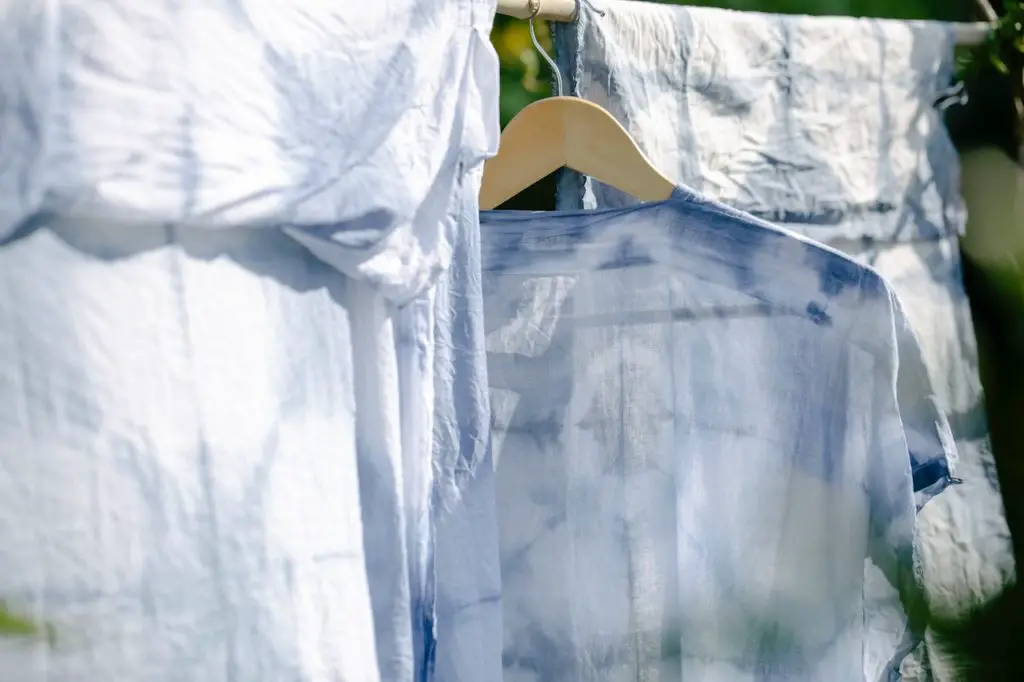
Fabric softeners can help minimize friction between clothes during washing and drying. They also make the fabric feel softer and reduce the chances of color fading. However, use fabric softeners sparingly, as an excessive amount can accumulate on the fabric and make it less absorbent.
7. Store Clothes Properly
When not in use, properly store your clothes to prevent fading. Direct exposure to light, particularly sunlight, can cause colors to fade over time. Store your clothes in a cool, dark, and dry place to maintain their vibrancy.
8. Test for Colorfastness
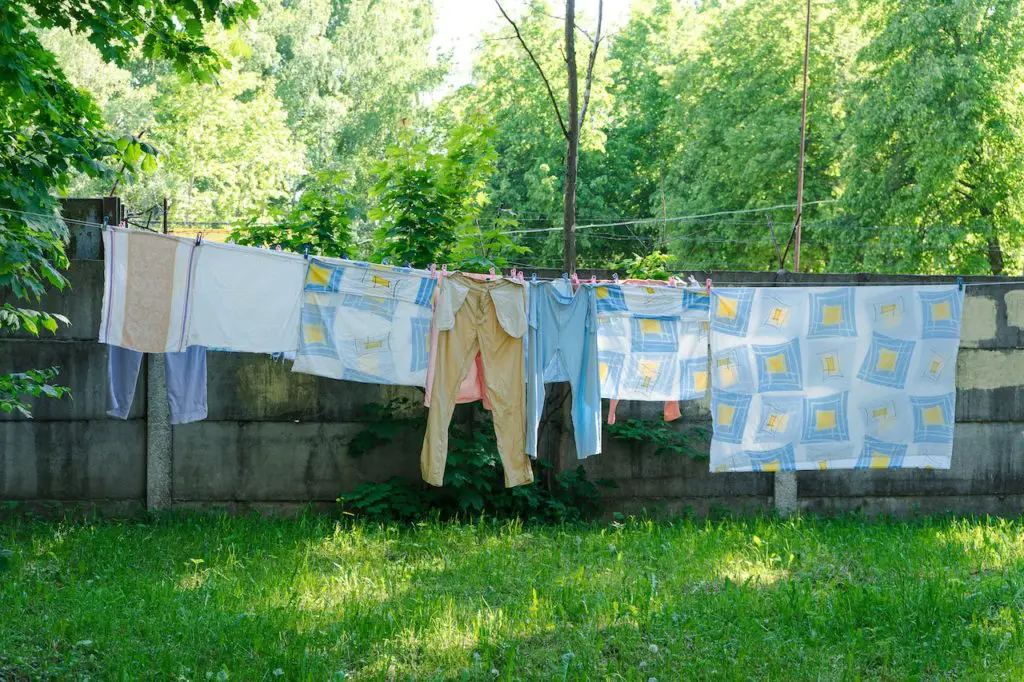
Before washing any new colored garment, it’s a good idea to check its colorfastness. Moisten a small, inconspicuous area of the fabric with water and dab it with a white cloth to see if any dye transfers. If there’s significant color transfer, it’s best to wash the garment separately or take it to a professional cleaner.
9. Follow Care Instructions
Always read and follow the care instructions provided on the garment label. Different fabrics and dyes may require specific care methods to prevent fading. Pay attention to recommended washing temperatures, drying methods, and any other instructions for maintaining the color of your clothes.
10. Consider Air Drying

If you’re concerned about fading, consider air drying your clothes instead of using a dryer. Air drying is a gentler option that reduces the risk of color fading. Hang your clothes on a drying rack or line in a well-ventilated area to avoid direct sun exposure.
By following these expert tips, you can help extend the lifespan and vibrancy of your clothes while reducing the risk of fading. Remember to handle your clothes with care and choose the appropriate cleaning methods to keep them looking their best.
The Pros and Cons of Sun Drying
Pros

- Natural and eco-friendly: Sun drying clothes is a sustainable and environmentally friendly option as it does not require electricity or fossil fuels.
- Energy savings: By using the sun’s heat and natural drying power, sun drying eliminates the need for electric dryers, reducing energy consumption and lowering utility bills.
- Gentle on fabrics: Sun drying is a gentle way to dry clothes, especially delicate fabrics like silk or wool, as it avoids the heat and tumbling motion of a dryer that can cause damage.
- Whitening effect: The sunlight has a natural bleaching effect, which can help to whiten and brighten white clothes.
- Fresh outdoor scent: Clothes dried in the sun have a fresh, outdoor scent that cannot be replicated by any artificial means.
Cons
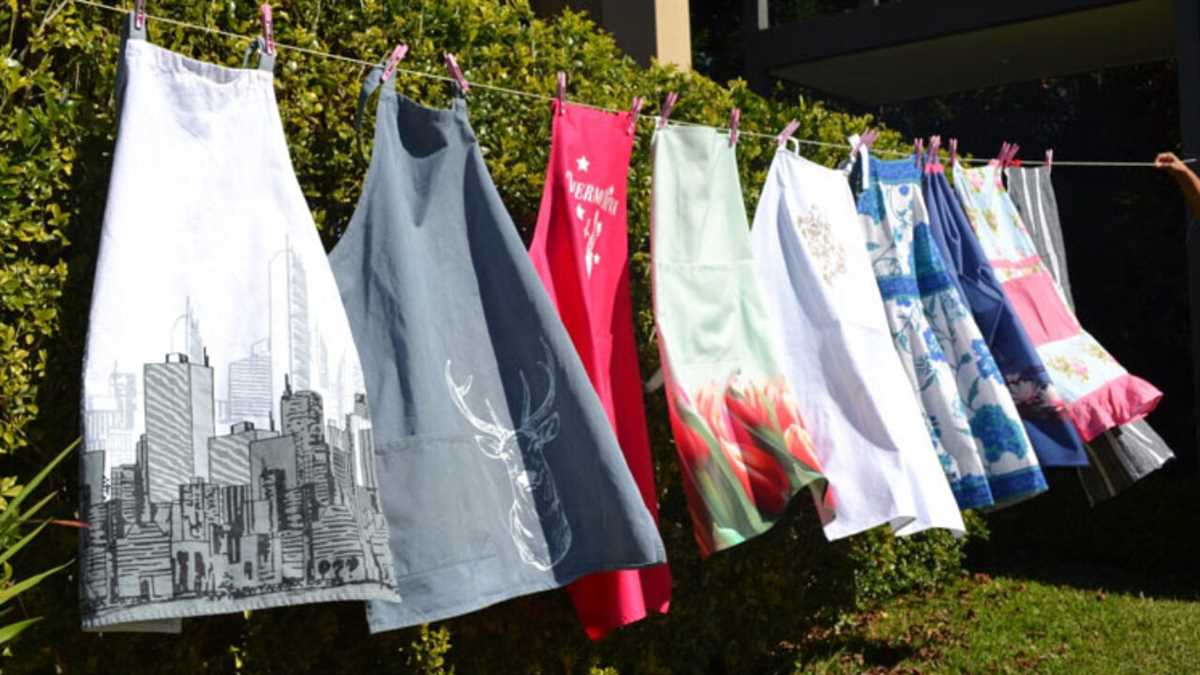
- Weather dependence: Sun drying is highly weather-dependent. Cloudy, rainy, or winter days may not offer enough sunlight for efficient drying.
- Longer drying time: Compared to dryers, sun drying usually takes longer because it relies on natural air circulation and the sun’s heat.
- Possible fading: While sun drying is generally safe for most fabrics, prolonged exposure to direct sunlight can cause some clothes to fade over time.
- Pollen and allergens: Drying clothes outside exposes them to pollen and other allergens, which can trigger allergies in sensitive individuals.
- Space limitations: Sun drying requires ample outdoor space or access to a balcony or backyard, which may not be available to everyone, especially those living in apartments or urban areas.
In conclusion, sun drying clothes has several advantages, including being eco-friendly, energy-saving, and gentle on fabrics. It can also provide a natural whitening effect and fresh outdoor scent. However, it is important to consider the drawbacks such as weather dependence, longer drying time, potential fading, exposure to allergens, and space limitations. Ultimately, the decision to sun dry clothes should be based on individual preferences, circumstances, and fabric care instructions.
FAQ
Does drying clothes in the sun cause fading?
Yes, drying clothes in the sun can cause fading. The sun’s ultraviolet (UV) rays are responsible for breaking down the dye molecules in fabrics, leading to fading over time.
How can I prevent my clothes from fading in the sun?
To prevent clothes from fading in the sun, you can try taking a few precautions. One option is to turn your clothes inside out before hanging them to dry in the sun. This can help protect the outer layer of fabric from direct exposure to UV rays. Another option is to hang your clothes in a shaded area or use a clothesline with a cover. Additionally, you can use a laundry detergent specifically designed to protect colors.
Does the type of fabric affect how much the sun will fade clothes?
Yes, the type of fabric can affect how much the sun will fade clothes. Some fabrics, such as natural fibers like cotton or linen, are more prone to fading than synthetic fabrics like polyester or nylon. This is because natural fibers may have less UV protection built into their structure.
Can I still dry my clothes in the sun without causing fading?
While drying clothes in the sun can cause fading over time, there are steps you can take to minimize the effect. One option is to dry clothes indoors or in a shaded area, away from direct sunlight. Another option is to use fabric softeners or specialized detergents that offer UV protection. Additionally, turning your clothes inside out before hanging them can help protect the outer layer of fabric from UV rays.
Is fading only caused by the sun, or are there other factors at play?
Fading can be caused by a combination of factors, not just the sun. While UV rays are a major contributor to fading, other factors like heat, humidity, and even the type of detergent used can also affect how quickly colors fade. It’s important to consider these factors and take appropriate measures to protect your clothes if you want to retain their original color.
Will drying clothes in the sun cause them to fade?
Yes, drying clothes in the sun can cause them to fade over time. The UV rays from the sun can break down the dyes in fabrics, leading to a loss of color.












